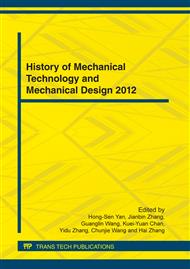p.138
p.143
p.151
p.155
p.162
p.166
p.172
p.176
p.180
Assembly Unit Partition Based on Theory of Cut-Set
Abstract:
In the manufacture process of many large-scaled and complex products assembly, due to large number of parts or components, assemblies are often divided into several small assembly units in order to organize production and increase assembly efficiency. To obtain fine-grained rapid assembly unit partition, this paper presents a method of assembly unit partition based on cut-set theory with consideration of the assembly constraints and assembly complexity. The paper also discusses the method of establishing the assembly relationship graph of a product as the basis of unit partition. The relationship graph is extracted from the CAD model of the product and is used to describe the relationship of its component assembly. Using the proposed unit partition method, assembly constraints such as precedence relationship can be considered so that invalid assembly unit partition will be avoided. Furthermore, by defining assembly complexity, optimal selection of assembly unit partition can be achieved. The procedures of assembly unit partition including establishing of assembly relationship from CAD model, approach to cut-set, optimal selection and validation are addressed with an assembly example and a flow chart.
Info:
Periodical:
Pages:
162-165
Citation:
Online since:
April 2012
Authors:
Price:
Сopyright:
© 2012 Trans Tech Publications Ltd. All Rights Reserved
Share:
Citation:


